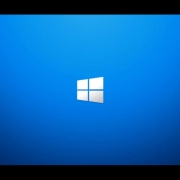Deploying Microsoft 365 Apps | MDT & RMM

Table of Contents
Intro
Deploying Microsoft 365 desktop applications is easy to do with a little knowledge and testing. Hopefully this post will help you accomplish this task with ease.
Office Deployment Tool
We’re going to need the Office Deployment Tool, please refer to Microsoft’s documentation here and also for download links if the first link is broken. When extracted you will be presented with some files which I will list below:
Office Deployment Tool Extracted Files List
- configuration-Office365-x64.xml
- configuration-Office365-x86.xml
- configuration-Office2019Enterprise.xml
- configuration-Office2021Enterprise.xml
- EULA
- setup.exe
The .xml files are included templates and I found these didn’t really work for me. So I headed over to Microsoft’s Office Customization Tool to create my own configuration .xml file for my specific needs. There are many options available to suite your deployment needs and requirements, be very careful with any upgrade, migration, and licensing options.
Download Your 365 Apps Configuration
Once you have your configuration file for your needs you’re going need to download the source files needed for deployment based on your configuration file options.
Download Configuration Source Files | Command
Run the following command replacing my .xml filename with yours:
setup.exe /download configuration-Office365-x64-Custom.xmlYou will notice an Office folder in the same directory where setup.exe is located. In the Office folder will be another folder called Data, this folder will contain the source files needed for install. This process takes a little bit so give it some time to complete.
Install Your 365 Apps Configuration
Install Configuration Source Files | Command
Run the following command replacing my .xml filename with yours:
setup.exe /configure configuration-Office365-x64-Custom.xmlDeploy 365 Apps | MDT
In regards to Microsoft Deployment Toolkit (MDT), you’re going to want to create an application instead of adding it into a Task Sequence. I prefer this route since I can just select the application if desired or not during deployment of an OS. You need to copy your source files downloaded to your deployment share.
My folder structure for this application will be as follows:
- Applications
- Windows x64
- Microsoft
- Microsoft Office 365 – Apps for Business
- Microsoft
- Windows x64
General (Tab):
- Name: Microsoft Office 365 – Apps for Business
- Short name: Microsoft Office 365 – Apps for Business
- Source directory: \Applications\Microsoft Office 365 – Apps for Business
- Note: This will be the directory in your deployment share where you will copy the downloaded source files.
- Enable the application: Checked
Details (Tab):
- Standard application:
- Quiet install command: setup.exe /configure configuration-Office365-x64-Custom.xml
- Working directory: \Applications\Microsoft Office 365 – Apps for Business
- Note: This will be the directory in your deployment share where you will copy the downloaded source files.
- This can run on any platform: Selected
Now keep in-mind your configuration file for MDT is going to be different than normal. In my case, I don’t want to download Microsoft 365 from the internet every time an OS is deployed so I copied my downloaded source files to my deployment share and referenced the location of them via the SourcePath parameter, see below.
MDT Configuration File | Self-Hosted Source Files
<Configuration ID="a342b785-7561-44c6-85ee-798e2ff94359">
<Add OfficeClientEdition="64" Channel="Current" SourcePath="Z:\v8456\Build-Lab\Applications\Microsoft Office 365 - Apps for Business" AllowCdnFallback="TRUE" MigrateArch="TRUE">
<Product ID="O365BusinessRetail">
<Language ID="en-us"/>
<ExcludeApp ID="Groove"/>
<ExcludeApp ID="Lync"/>
<ExcludeApp ID="OneDrive"/>
</Product>
</Add>
<Updates Enabled="TRUE"/>
<RemoveMSI/>
<Display Level="Full" AcceptEULA="TRUE"/>
</Configuration>As you can see I referenced the Z: drive that is mapped automatically by MDT during deployment and the location of the directory in the deployment share to pull files from. This greatly reduces deployment time.
Deploy 365 Apps Desktop Shortcuts
Also consider deploying the shortcuts for the applications.
My folder structure is as follows:
- Applications
- Windows x64
- Microsoft
- Microsoft 365 – Desktop Shortcuts
- Microsoft
- Windows x64
General (Tab):
- Name: Microsoft 365 – Desktop Shortcuts
- Short name: Microsoft Office 365 – Desktop Shortcuts
- Source directory: \Applications\Microsoft 365 – Desktop Shortcuts
- Note: This will be the directory in your deployment share where you will copy the .ps1 PowerShell script.
- Enable the application: Checked
Details (Tab):
- Standard application:
- Quiet install command:
powershell.exe -executionpolicy bypass -noprofile -noninteractive -file "./install-microsoft-365-desktop-shortcuts.ps1"- Working directory: \Applications\Microsoft 365 – Desktop Shortcuts
- Note: This will be the directory in your deployment share where you will copy the .ps1 PowerShell script.
- This can run on any platform: Selected
PowerShell Script | Deploy Microsoft 365 Desktop Shortcuts
Here is the code inside the PowerShell script:
# Copy and Paste Microsoft Office Shortcuts from ProgramData Directory
Copy-Item -Path "C:\ProgramData\Microsoft\Windows\Start Menu\Programs\Access.lnk" -Destination 'C:\Users\Public\Desktop' -Force
Copy-Item -Path "C:\ProgramData\Microsoft\Windows\Start Menu\Programs\Excel.lnk" -Destination 'C:\Users\Public\Desktop' -Force
Copy-Item -Path "C:\ProgramData\Microsoft\Windows\Start Menu\Programs\Outlook.lnk" -Destination 'C:\Users\Public\Desktop' -Force
Copy-Item -Path "C:\ProgramData\Microsoft\Windows\Start Menu\Programs\PowerPoint.lnk" -Destination 'C:\Users\Public\Desktop' -Force
Copy-Item -Path "C:\ProgramData\Microsoft\Windows\Start Menu\Programs\Publisher.lnk" -Destination 'C:\Users\Public\Desktop' -Force
Copy-Item -Path "C:\ProgramData\Microsoft\Windows\Start Menu\Programs\Word.lnk" -Destination 'C:\Users\Public\Desktop' -ForceAll the script does is copy the shortcuts from the ProgramData location to the Public Desktop after Microsoft 365 applications are installed. You want to make sure this runs after the install of the applications.
Deploy 365 Apps | RMM
When using an RMM solution you’re going to want to pull your source files from the internet so your configuration will be different, see mine below, the SourcePath parameter is removed so the contents can be downloaded from the internet.
RMM Configuration
<Configuration ID="a342b785-7561-44c6-85ee-798e2ff94359">
<Add OfficeClientEdition="64" Channel="Current" MigrateArch="TRUE">
<Product ID="O365BusinessRetail">
<Language ID="en-us"/>
<ExcludeApp ID="Groove"/>
<ExcludeApp ID="Lync"/>
<ExcludeApp ID="OneDrive"/>
</Product>
</Add>
<Updates Enabled="TRUE"/>
<RemoveMSI/>
<Display Level="Full" AcceptEULA="TRUE"/>
</Configuration>Custom RMM Configuration
Here is the current one that I use with ConnectWise Automate for Apps for Business. This one I considered every option from the Office Deployment Tool.
<Configuration ID="f6b85911-c117-49d7-b60c-8522bb9b048f">
<Add OfficeClientEdition="64" Channel="Current" MigrateArch="TRUE">
<Product ID="O365BusinessRetail">
<Language ID="en-us"/>
<ExcludeApp ID="Groove"/>
<ExcludeApp ID="Lync"/>
<ExcludeApp ID="OneDrive"/>
</Product>
</Add>
<Property Name="SharedComputerLicensing" Value="0"/>
<Property Name="FORCEAPPSHUTDOWN" Value="TRUE"/>
<Property Name="DeviceBasedLicensing" Value="0"/>
<Property Name="SCLCacheOverride" Value="0"/>
<Updates Enabled="TRUE"/>
<RemoveMSI>
<IgnoreProduct ID="InfoPath"/>
<IgnoreProduct ID="InfoPathR"/>
<IgnoreProduct ID="PrjPro"/>
<IgnoreProduct ID="PrjStd"/>
<IgnoreProduct ID="SharePointDesigner"/>
<IgnoreProduct ID="VisPro"/>
<IgnoreProduct ID="VisStd"/>
</RemoveMSI>
<Display Level="None" AcceptEULA="TRUE"/>
</Configuration>Perpetual 2019 Volume License Configuration Example | MAK Key
<Configuration ID="1220bba7-9223-4e9b-b9ff-3f966cb8b2d0">
<Add OfficeClientEdition="64" Channel="PerpetualVL2019">
<Product ID="Standard2019Volume" PIDKEY="XXXXX-XXXXX-XXXXX-XXXXX-XXXXX">
<Language ID="en-us"/>
<ExcludeApp ID="Groove"/>
</Product>
</Add>
<Property Name="SharedComputerLicensing" Value="0"/>
<Property Name="FORCEAPPSHUTDOWN" Value="FALSE"/>
<Property Name="DeviceBasedLicensing" Value="0"/>
<Property Name="SCLCacheOverride" Value="0"/>
<Property Name="AUTOACTIVATE" Value="1"/>
<Updates Enabled="TRUE"/>
<RemoveMSI/>
</Configuration>Microsoft 365 Desktop Applications | RDS Server Requirements
To install and run Microsoft 365 desktop applications on a Remote Desktop Services (RDS) server, there are several system requirements and configuration steps that need to be followed. These requirements are essential to ensure that the Office apps work properly in a multi-user environment like RDS.
Here’s a breakdown of the requirements for an RDS server to install and run Office Desktop Applications (such as Office 365 or Microsoft 365 apps):
1. Microsoft 365 Licensing:
- Shared Computer Activation (SCA): RDS requires Shared Computer Activation (SCA) for Microsoft 365 Apps to work in a multi-user environment. Each user needs to be assigned a Microsoft 365 (or Office 365) subscription that includes the apps.
- Business, Enterprise, or Education licenses are required.
- Microsoft 365 Apps for Enterprise or Microsoft 365 Business Standard are typical license types.
- Ensure that each user logging in to the RDS environment has an active and valid license for Microsoft 365.
2. Remote Desktop Services (RDS) Licensing:
- RDS CALs (Client Access Licenses) are required for each user or device that connects to the RDS server.
- Ensure that your RDS CALs are correctly configured to allow multiple users to access the server simultaneously.
3. Server OS Requirements:
- The RDS server must be running a supported Windows Server OS (e.g., Windows Server 2016, 2019, or 2022).
- Microsoft 365 Apps for Enterprise or Office 365 Apps are supported on Windows Server 2016 and later for multi-user installations.
4. System Requirements for Office Installation:
- Hardware: Ensure that your RDS server has enough resources to support multiple users running Office apps. This includes sufficient:
- CPU: Multi-core processors are recommended (minimum 2 cores).
- RAM: At least 4 GB of RAM (preferably more, depending on the number of concurrent users).
- Disk Space: Sufficient free disk space for Office installation files (roughly 4-5 GB for the Office apps).
- Operating System Requirements:
- The server must be running a 64-bit version of Windows Server if you intend to install 64-bit versions of Office.
5. Office Deployment Tool (ODT) Configuration for RDS:
- Office Deployment Tool (ODT) is used to deploy Office on RDS servers.
- The Shared Computer Activation (SCA) setting must be enabled in your Office configuration file. This allows Office apps to be activated and used by multiple users on the same server.
- You’ll need to create a configuration.xml file for your Office deployment, ensuring Shared Computer Licensing is set to
1in the XML.Example Configuration for RDS:
<Configuration ID="9f1b294b-8abf-4a6f-b008-34d344476202">
<Add OfficeClientEdition="64" Channel="Current" MigrateArch="TRUE">
<Product ID="O365ProPlusRetail">
<Language ID="en-us"/>
<ExcludeApp ID="Groove"/>
<ExcludeApp ID="Lync"/>
</Product>
<Product ID="ProofingTools">
<Language ID="en-us"/>
</Product>
</Add>
<Property Name="SharedComputerLicensing" Value="1"/>
<Property Name="FORCEAPPSHUTDOWN" Value="TRUE"/>
<Property Name="DeviceBasedLicensing" Value="0"/>
<Property Name="SCLCacheOverride" Value="0"/>
<Updates Enabled="TRUE"/>
<RemoveMSI/>
<Display Level="None" AcceptEULA="TRUE"/>
</Configuration>
- SharedComputerLicensing: Set to
1to enable Shared Computer Activation.- FORCEAPPSHUTDOWN: Forces Office apps to shut down during the installation process to avoid conflicts.
- DeviceBasedLicensing: Set to
0to disable device-based licensing for multi-user environments.6. Installation Process:
- Run Office Deployment Tool: Once your configuration XML file is ready, you can install Office on the RDS server by running the Office Deployment Tool with the following command:
setup.exe /configure configuration.xmlThis command will install the Office apps as per the settings defined in the configuration file.7. Remote Desktop Licensing and Access:
- Remote Desktop Session Host (RDSH): Make sure that the server is configured as an RDSH (Remote Desktop Session Host), which allows multiple users to remotely access the server simultaneously.
- RDS Licensing: Ensure that you have properly installed and configured Remote Desktop Licensing on the server, which is required for managing multiple RDS connections.
8. Configuration for Users:
- After installation, each user logging in remotely will need to sign in with their Microsoft 365 credentials for the Office apps to activate and be used.
- You will want to verify that Shared Computer Activation is working by testing with multiple user accounts, ensuring that each user’s instance of Office is activated and configured for their needs.
9. Performance Considerations:
- Resource Planning: Since multiple users will be running Office apps concurrently on the same server, make sure the server has adequate resources (CPU, memory, disk space) to handle the load.
- Office Cache: Consider configuring Office Deployment Cache settings to optimize performance and reduce the time it takes for applications to load and run.
10. Updating Office on RDS:
- Office updates can be managed via Group Policy, the Office Deployment Tool, or the Microsoft Endpoint Configuration Manager.
- It is important to schedule regular updates to ensure Office apps are up-to-date, especially with security updates.
Summary of Key Requirements for Installing Microsoft 365 Apps on an RDS Server:
- Microsoft 365 License with Shared Computer Activation (SCA).
- RDS CALs for user/device access.
- Windows Server 2016 or later with at least 4 GB of RAM and sufficient disk space.
- Office Deployment Tool configured for Shared Computer Licensing.
- Proper RDS Licensing and Session Host configuration for multi-user access.
- Sufficient hardware resources to support multiple users simultaneously.
Once everything is configured correctly, your users should be able to access and use the Office 365 apps via RDS, with activation handled through Shared Computer Activation, allowing them to use the apps concurrently on the same server.
Conclusion
Well that sure was some fun in the sun, hopefully this helped your day. Please comment about any issues or questions. Thanks!
My name is Dex Sandel, author at WinReflection.
I am a Christian, conservative, and truth seeker that is not afraid to be vocal on important or controversial issues, silence leads to death. When a person has that courage the enemy tries to send haters and wolves in sheep’s clothing their way. There are many rewards earned in Heaven for those that refuse to give up. There’s more to life than the worldly status quo and that’s why many are sad and depressed, they’re suffocating! Truth and purpose can bring fresh air into one’s life and that’s my mission.
The best is yet to come, and nothing can stop what’s coming!
John 3:16: For God so loved the world that he gave his one and only Son, that whoever believes in him shall not perish but have eternal life.


Leave a Reply
Want to join the discussion?Feel free to contribute!